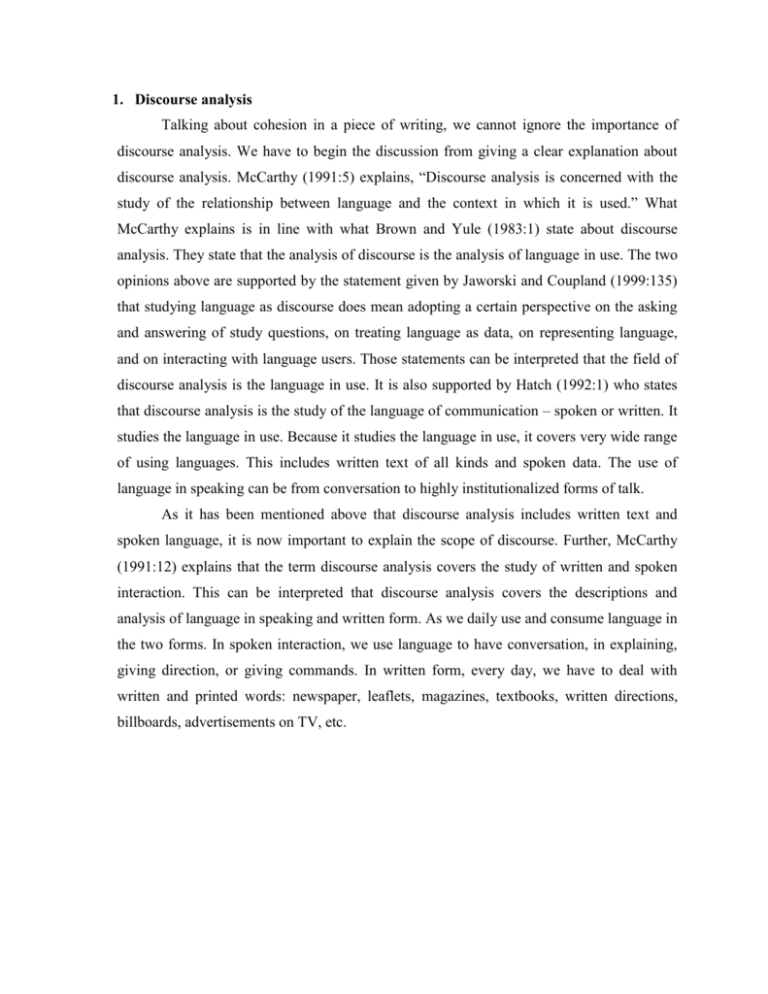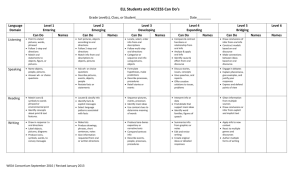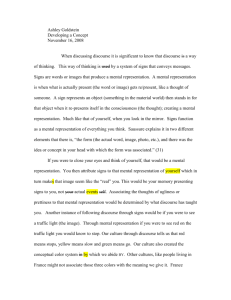Discourse analysis Talking about cohesion in a piece of writing, we
advertisement

1. Discourse analysis Talking about cohesion in a piece of writing, we cannot ignore the importance of discourse analysis. We have to begin the discussion from giving a clear explanation about discourse analysis. McCarthy (1991:5) explains, “Discourse analysis is concerned with the study of the relationship between language and the context in which it is used.” What McCarthy explains is in line with what Brown and Yule (1983:1) state about discourse analysis. They state that the analysis of discourse is the analysis of language in use. The two opinions above are supported by the statement given by Jaworski and Coupland (1999:135) that studying language as discourse does mean adopting a certain perspective on the asking and answering of study questions, on treating language as data, on representing language, and on interacting with language users. Those statements can be interpreted that the field of discourse analysis is the language in use. It is also supported by Hatch (1992:1) who states that discourse analysis is the study of the language of communication – spoken or written. It studies the language in use. Because it studies the language in use, it covers very wide range of using languages. This includes written text of all kinds and spoken data. The use of language in speaking can be from conversation to highly institutionalized forms of talk. As it has been mentioned above that discourse analysis includes written text and spoken language, it is now important to explain the scope of discourse. Further, McCarthy (1991:12) explains that the term discourse analysis covers the study of written and spoken interaction. This can be interpreted that discourse analysis covers the descriptions and analysis of language in speaking and written form. As we daily use and consume language in the two forms. In spoken interaction, we use language to have conversation, in explaining, giving direction, or giving commands. In written form, every day, we have to deal with written and printed words: newspaper, leaflets, magazines, textbooks, written directions, billboards, advertisements on TV, etc.






